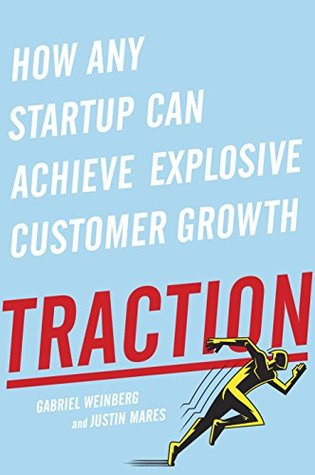More on this book
Community
Kindle Notes & Highlights
Traction is the best way to improve your chances of startup success. Traction is a sign that something is working. If you charge for your product, it means customers are buying. If your product is free, it’s a growing user base.
Traction is basically quantitative evidence of customer demand.
A startup is a company designed to grow fast. Being newly founded does not in itself make a company a startup. Nor is it necessary for a startup to work on technology, or take venture funding, or have some sort of “exit.” The only essential thing is growth. Everything else we associate with startups follows from growth.
Almost every failed startup has a product. What failed startups don’t have is enough customers.
Traction and product development are of equal importance and should each get about half of your attention. This is what we call the 50 percent rule: spend 50 percent of your time on product and 50 percent on traction.
These interactions also get you additional data, like what messaging is resonating with potential customers, what niche you might focus on first, what types of customers will be easiest to acquire, and what major distribution roadblocks you might run into.
Phase I—making something people want Phase II—marketing something people want Phase III—scaling your business
A startup can be awesome if you believe in it: if not, it can get old quickly.
Pursue traction and product development in parallel, and spend equal time on both. Think of your product as a leaky bucket. Your early traction efforts are pointing you toward the holes worth plugging.
Most businesses actually get zero distribution channels to work. Poor distribution—not product—is the number one cause of failure. If you can get even a single distribution channel to work, you have great business. If you try for several but don’t nail one, you’re finished. So it’s worth thinking really hard about finding the single best distribution channel.
The first step in Bullseye is brainstorming every single traction channel. If you were to advertise offline, where would be the best place to do it? If you were to give a speech, who would be the ideal audience? Imagine what success would look like in each channel, and write it down in your outer ring.
For each channel, you should identify one decent channel strategy that has a chance of moving the needle. For example, social ads is a traction channel. Specifically running ads on reddit, Twitter, or Facebook is a channel strategy within social ads. Through brainstorming, identify the best channel strategy you can think of in each of the nineteen traction channels.
The second step in Bullseye is running cheap traction tests in the channels that seem most promising.


